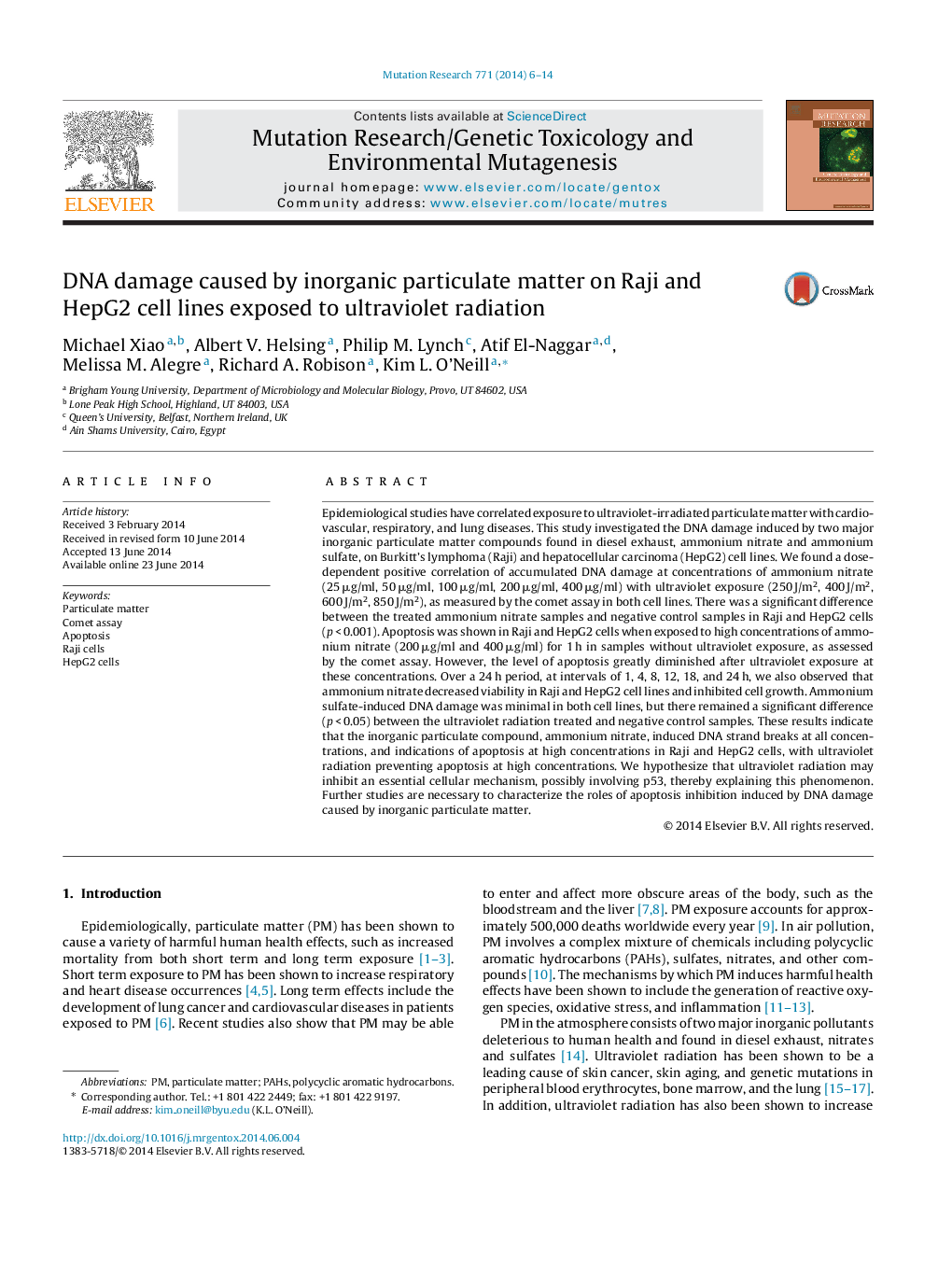| کد مقاله | کد نشریه | سال انتشار | مقاله انگلیسی | نسخه تمام متن |
|---|---|---|---|---|
| 2147922 | 1548590 | 2014 | 9 صفحه PDF | دانلود رایگان |

• Positive correlation between ammonium nitrate, and genotoxicity in Raji and HepG2.
• We observed apoptosis at high concentrations of ammonium nitrate in Raji and HepG2.
• Apoptosis at high concentrations decreased with ultraviolet exposure – comet assay.
• Ammonium nitrate decreases viability and cell growth in Raji and HepG2 in 24 h incubation.
• Another harmful inorganic PM compound, ammonium sulfate causes no genotoxicity.
Epidemiological studies have correlated exposure to ultraviolet-irradiated particulate matter with cardiovascular, respiratory, and lung diseases. This study investigated the DNA damage induced by two major inorganic particulate matter compounds found in diesel exhaust, ammonium nitrate and ammonium sulfate, on Burkitt's lymphoma (Raji) and hepatocellular carcinoma (HepG2) cell lines. We found a dose-dependent positive correlation of accumulated DNA damage at concentrations of ammonium nitrate (25 μg/ml, 50 μg/ml, 100 μg/ml, 200 μg/ml, 400 μg/ml) with ultraviolet exposure (250 J/m2, 400 J/m2, 600 J/m2, 850 J/m2), as measured by the comet assay in both cell lines. There was a significant difference between the treated ammonium nitrate samples and negative control samples in Raji and HepG2 cells (p < 0.001). Apoptosis was shown in Raji and HepG2 cells when exposed to high concentrations of ammonium nitrate (200 μg/ml and 400 μg/ml) for 1 h in samples without ultraviolet exposure, as assessed by the comet assay. However, the level of apoptosis greatly diminished after ultraviolet exposure at these concentrations. Over a 24 h period, at intervals of 1, 4, 8, 12, 18, and 24 h, we also observed that ammonium nitrate decreased viability in Raji and HepG2 cell lines and inhibited cell growth. Ammonium sulfate-induced DNA damage was minimal in both cell lines, but there remained a significant difference (p < 0.05) between the ultraviolet radiation treated and negative control samples. These results indicate that the inorganic particulate compound, ammonium nitrate, induced DNA strand breaks at all concentrations, and indications of apoptosis at high concentrations in Raji and HepG2 cells, with ultraviolet radiation preventing apoptosis at high concentrations. We hypothesize that ultraviolet radiation may inhibit an essential cellular mechanism, possibly involving p53, thereby explaining this phenomenon. Further studies are necessary to characterize the roles of apoptosis inhibition induced by DNA damage caused by inorganic particulate matter.
Journal: Mutation Research/Genetic Toxicology and Environmental Mutagenesis - Volume 771, 1 September 2014, Pages 6–14